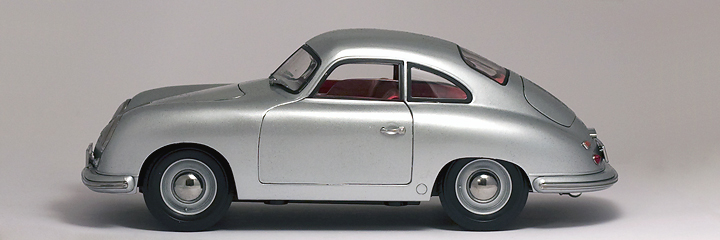
Porsche 550 RS Spyder

Porsche 550 RS Spyder

Porsche 550 RS Spyder
The original two 550's were prepared for the Carrera Panamerica race in 1953. Adorned with sponsor stickers and livery the two cars easily dominated the 1500 cc class. Jose Herrate's 550-02 emerged victorious though 550-01, driven by Jaroslav Juhan, was the faster of the two but forced to retire due to mechanical difficulties. The following year 550-04, outfitted with the Fuhrmann quad-cam engine, was entered into the Carrera Panamerica race where it finished third overall and first in class. In honor of these accomplishments, the 356 models outfitted with the Fuhrmann engine were now dubbed 'Carrera'.
In total there were around 90 examples of 550 RS Spyders created with 78 being sectioned for public use. In 1956 Porsche introduced the 550A which looked nearly identical to its predecessor but featured many mechanical improvements including a spaceframe chassis coupled to a Fuhrmann four-cam 547 engine capable of producing over 130 horsepower. It featured a five speed manual gearbox and multi-link suspension which greatly improved the handling while reducing over-steer.
The Porsche 550 was a very successful car that showcased the capabilities and creativity of Porsche. Throughout the years to come, new Porsches were created that were bigger, better, and faster, and continued the tradition on the racing circuits of this historic pedigree.
In total there were around 90 examples of 550 RS Spyders created with 78 being sectioned for public use. In 1956 Porsche introduced the 550A which looked nearly identical to its predecessor but featured many mechanical improvements including a spaceframe chassis coupled to a Fuhrmann four-cam 547 engine capable of producing over 130 horsepower. It featured a five speed manual gearbox and multi-link suspension which greatly improved the handling while reducing over-steer.
The Porsche 550 was a very successful car that showcased the capabilities and creativity of Porsche. Throughout the years to come, new Porsches were created that were bigger, better, and faster, and continued the tradition on the racing circuits of this historic pedigree.

















